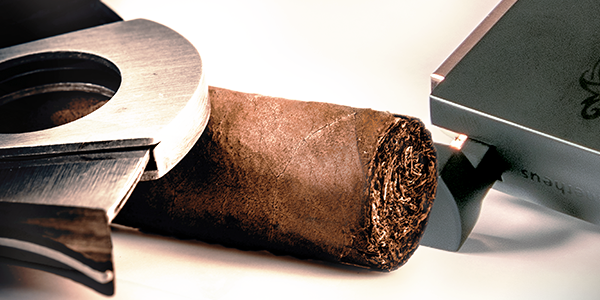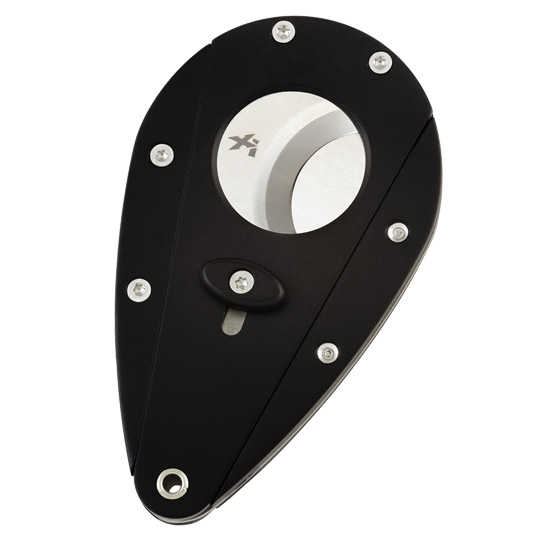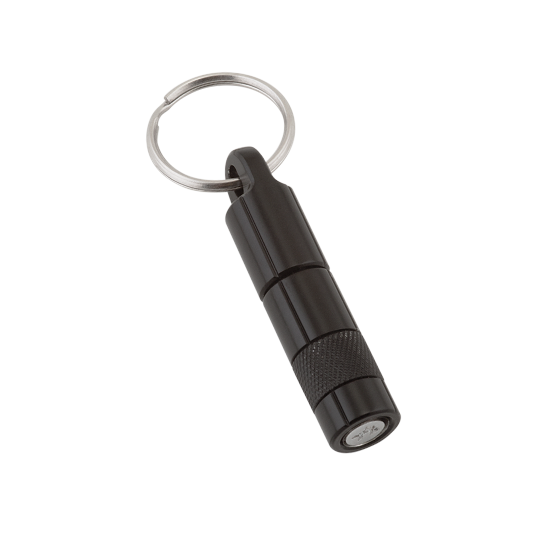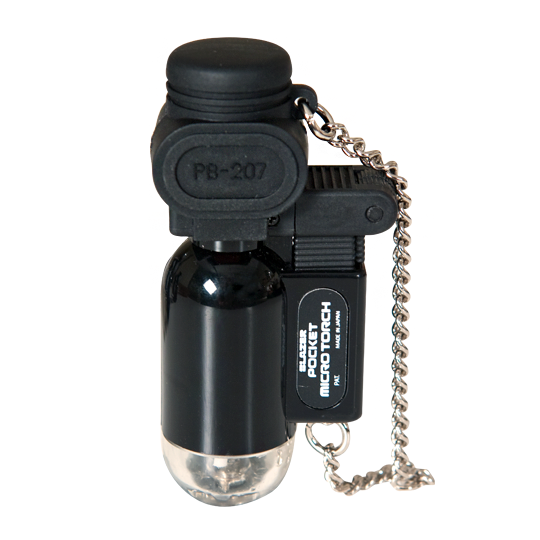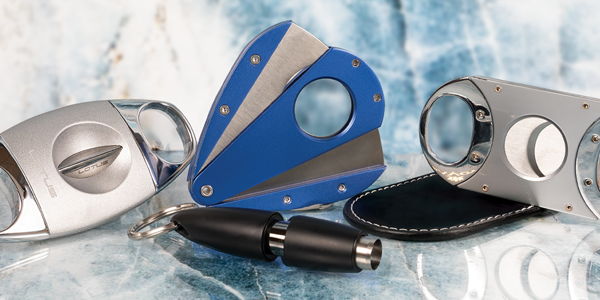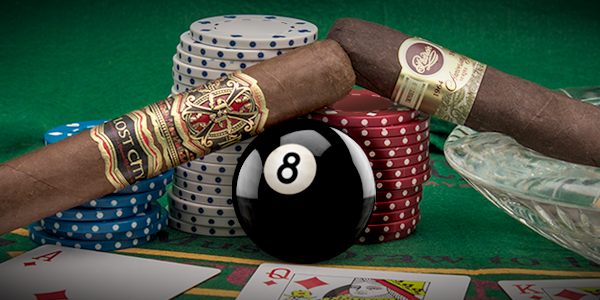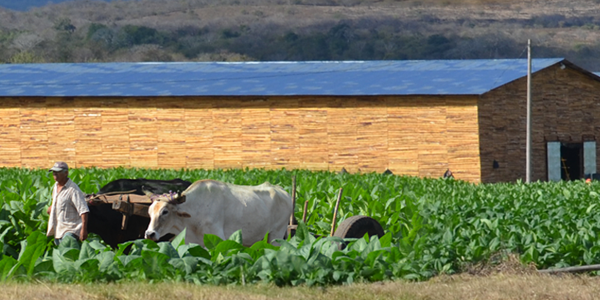How to Perfectly Cut and Light Your Cigar
Indulging in a terrific cigar is easily the most enjoyable part of a long day or week for most cigar lovers. Premium cigars are patiently handcrafted by skilled artisans who spend years developing their technique. In order to fully access the rich flavor and aroma fine cigars deliver, it is essential to know how to cut a cigar and how to light a cigar properly. Carrying out either preparation without the necessary care can greatly reduce your enjoyment of your next cigar by leading to a crooked burn or a constricted draw, which in turn can interrupt the flavor as the blender intended for you to taste it.
Following, your pals at Holt’s have illuminated the primary methods for cutting and lighting your cigar to ensure you’re equipped with the right technique to achieve maximum satisfaction.
Making the Cut: How to Cut a Cigar
Before you even contemplate using a cigar cutter, it’s important to review the anatomy of a fine, hand-crafted cigar and explain the necessity of a cutter. A cigar is constructed by rolling tobacco leaves into a cylindrical shape, affording a perfect balance of firmness that permits airflow for the smoker (also known as draw). The end, or head, of the cigar is ‘capped’ to effectively seal the rolled leaves. This cap must be cut to allow the flow of air. Cutting too much off, or cutting too deep, removes the entire cap and can permit the cigar wrapper to unravel much more easily as you smoke it. Cutting too little can inhibit the draw. There are a handful of distinct styles of cigar cuts and cutters, outlined below, that get the job done with amazing precision.
Straight Cutter
A straight cutter, also commonly called a guillotine cutter, is typically designed with either a single or a double blade. Insert the very tip of the head of the cigar into the cutter and surround the cap with a touch of pressure between the blades. The key here is to remove roughly the circumference of a dime from the head of the cigar (this will depend slightly based on the ring gauge of your cigar). Remember, the wrapper leaf of a cigar is essentially paper thin. As a result, you will only need to remove a thin slice of the cap to permit airflow in your cigar. It is generally not recommended to insert the cigar too deep into the circumference of the cutter. In doing so, you will inevitably snip off the entire cap, allowing the cigar a greater likelihood of becoming unraveled, creating a messier experience and a greater propensity to get loose tobacco in your mouth. When you want to know how to cut a Torpedo cigar, or a Figurado (figured shape), only insert as much of the cap as you prefer; just enough to get a draw that you are comfortable with. Torpedo-shaped cigars are tapered at the head to deliver a deliberate concentration of flavor. Regardless of what size or shape of cigar you prefer, it's wise to be more conservative and take less off with your initial cut, as you can always test the draw with the cigar in your mouth and choose to cut more off the cap off if you find that the draw is too constricted at first.
Cigar Punch
As its name indicates, a cigar punch, or a punch cutter (often referred to as a ‘bullet cutter’), ‘punches’ a hole in the cigar cap to create airflow with a circular blade. A cigar punch cutter will only work with traditional cigar shapes, or Parejos, as opposed to Torpedo-shaped cigars, or any shapes that taper too dramatically at the head. A punch cutter is designed to deliver a more concentrated and slightly hotter draw on the palate, while keeping the periphery of the cigar cap completely intact. The trick with how to use a cigar punch effectively lies in gently applying pressure to ‘screw’ the blade in just deep enough to remove the center of the cigar’s cap. Gently remove the blade and the center of the cigar cap should come with it. Punch cutters are commonly integrated into many popular models of cigar lighters.
V-Cutter
A V-Cutter, also called a ‘cat’s eye, will deliver a more concentrated draw on the palette, similar to a punch cutter. However, a V-Cutter creates a draw designed to blend the smoke directly on your palette by pulling it in from the top and bottom of the cigar for fuller flavor with a bit more intensity. A handful of V-Cutters are now manufactured with inverted blades that will slice a V-Shape out of the cap with less interruption to the integrity of the cigar’s cap. Some cigar lovers even prefer the V-Cutter for Torpedo-shaped cigars to gain maximum intensity in every draw.
Cigar Scissors
Resembling precision surgical instruments, cigar scissors are regarded as the tools of true cigar connoisseurs and aficionados. The best models are constructed of high quality steel and can be costly in some cases, but offer expert cutting ability. The advantage that cigar scissors offer is in their ability to open to a wider degree and, therefore, can cut the biggest ring gauge cigars with ease. Although many traditional cigar scissors are less portable, or pocket-friendly, a handful of recent designs, such as the Xikar MTX can easily fold up and fit on a key ring for maximum convenience.
Cigar Piercer
A cigar piercer is essentially like a serrated toothpick, designed to poke a small hole(s) in the cap of your cigar. A cigar piercer also comes in handy if you feel your cigar could be plugged. Piercing the head of the cigar in numerous places can loosen an overly tight draw and facilitate additional airflow.
Lightin’ Up: How to Light a Cigar
Once you have chosen the appropriate cutting device and mastered its use, it is time to choose the best lighting method for your handcrafted cigar. The key to lighting your cigar involves patience and achieving a uniform burn. Think of toasting the perfect golden brown marshmallow in a camp fire: the marshmallow never enters the flame, but rides above it, cooking slowly and evenly. The same principle goes for lighting a fine cigar: keep it above the flame, or at a measured distance, and gradually rotate it, watching for the entire end begin to burn. As the tobacco begins to glow, draw once or twice to see if the burn is consistent. If not, continue rolling the cigar above the flame, until you observe a consistent ash. It will take some time to master, but the lighting process should be savored, not rushed.
As with cigar cutters, there are varying types of lighters available, some better than others. Here’s a quick tutorial:
Lighters
The best cigar lighters are powered by butane fuel. It’s important to use butane that is triple-refined, as it possesses few impurities that will clog the jets in your lighter, or introduce any unwanted residue into your cigar. Quality butane lighters are available in a wide variety of models and styles. The most common types are torch lighters and soft-flame lighters.
Generally speaking, it’s best to avoid using a Zippo, or any type of liquid-fuel lighter, as opposed to butane (gas). Liquid fuel lighters can taint the flavor of your cigar with an undesirable fuel taste. However, we’ve known a number of cigar lovers over the years who are pretty attached to their Zippos, so instead of advertising rigid cigar-lighting disciplines, we say smoke ‘em if you’ve got ‘em!
Torch Flame
A quality torch lighter is an accurate tool for lighting up a cigar. Torch flames are great because they provide an immediate and direct jet that addresses the foot of your cigar with a tremendous focus. It’s a common practice to toast the end of your cigar before taking your initial puffs. One thing to keep in mind is to maintain an acceptable distance between the torch and your cigar when lighting up. The top of a torch flame is actually invisible and cigar smokers commonly blast the end of their cigars with an unnecessary degree of heat.
We suggest holding the foot of your cigar about a half inch from the tip of the flame. Make sure you evenly distribute the flame over the foot of the cigar until you’ve achieved a consistent orange-red color. If you’re lighting a cigar with a closed foot, briefly touch the flame to the foot and allow it to ignite slowly.
A variety of torches are available. Different models feature single, double, triple or even quadruple jets for added power and intensity. A handful of companies make beefy lighters perfect for the tabletop down in your man cave. Some torch lighters are specifically designed for higher altitudes and outdoor conditions.
Soft Flame
Soft flame lighters include a true range of models, from a commonplace and inexpensive Bic to a collectible, high-end ST Dupont. Soft flame lighters require a different kind of finesse. The manner and speed with which you light your cigar is controlled as much by how you draw on the cigar as it is by the flame. Gently toast the end of your cigar and take a few puffs. Many cigar smokers will rotate their cigar over the flame to gain a consistent burn. Soft flame lighters often necessitate a bit more patience, but the experience is construed by some as being more classic or romantic. Certain soft flame cigar lighters feature a double flame (sometimes called rabbit ears), which is ideal for lighting the wide circumference of a cigar.
Wooden Matches
Matches make a great statement when you want to light your cigar. Maybe your lighter is at home, or in another jacket, but matches can save the day. We recommend relying on wooden or stick matches, as opposed to paper, because they typically burn cleaner and provide an extra moment for the sulfur on the tip to dissipate. You can even procure extra-long cedar stick matches, which are manufactured exclusively for lighting cigars. In many cases it’s a good idea to strike two matches simultaneously to provide a wider flame to light your cigar. If you don’t light it on the first try, don’t worry, it often takes numerous strikes to achieve a full and consistent burn.
Time to Enjoy
Now that you have a roadmap for correctly cutting and lighting your next cigar, you can fire up like a pro. Remember, preparing your cigar takes patience, and is a process that should be enjoyed, not rushed. When done properly, cutting and lighting your cigar will make the smoking experience a memorable one.

